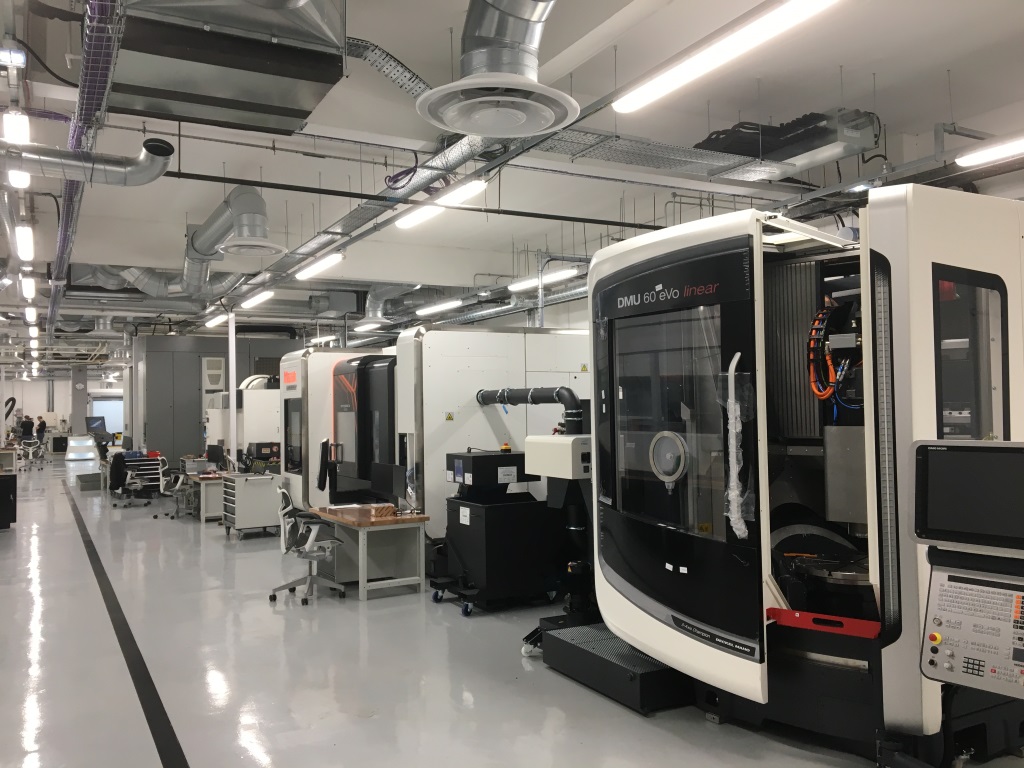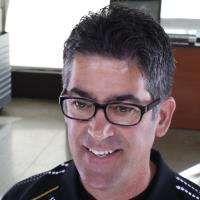28 Feb 2018
Hali Larsen: Visualizing Machine Data at Autodesk's AMF

The Autodesk Technology Centers in San Francisco (Pier 9), Boston (BUILD Space) and Toronto (MaRS), and Birmingham (Advanced Manufacturing Facility) help Autodesk explore the future of manufacturing, building, design, and making overall. These facilities have become ways for us to “look over the horizon” at the future of the industries we serve and work with customers interested in the future of their businesses and the role of innovation in that future.
Hali Larsen is a Design Research Engineer at our Ontario office. Hali recently shared some information about the work that Autodesk Research is doing by building upon Autodesk Forge at our Technology Center in Birmingham. It's another example of Autodesk eating our own dog food, so with Hali's permission, I thought I would share it with the It's Alive in the Lab readership.
For the unfamiliar, Forge is our application program interface (API) platform and supporting materials (sample code, manuals) as well as a community of developers who uses those APIs. Forge provides Autodesk customers and partners with the ability to develop their own custom solutions particular to their particular workflows. Give a man an application, and he'll work for a day. Give a man an application program interface, and he'll work for a lifetime. [ref]
Here is Hali's story:
For the relaunch of Autodesk's Advanced Manufacturing Facility (AMF) in Birmingham, the Toronto-based Complex Systems Team from Autodesk Research collaborated with our Digital Manufacturing Group and AMF Technical Consultants to gather and display machine data and environmental sensor data in the context of a 3D BIM of the workshop floor. The demo used the latest iteration of Project Dasher (a web-based data visualization tool built on Forge) and Data360 (our cloud-based time-series database for the capture, processing, storage, and retrieval of high-frequency sensor data).
Visualization experiences such as those presented make production data easier to understand and accessible for a broader range of stakeholders. Having the demo running on location during the relaunch events generated customer excitement about next-generation possibilities for connected systems and IoT data in the manufacturing context.
Our Data360 API is now capturing streaming data directly from the machines at AMF using our Programmable Data Router (PDR) technology over the MTconnect SHDR (Simple Hierarchical Data Representation) protocols. This setup will continue to build a historical dataset that was initially populated with historic data from Vimana, which runs at the AMF to enable Fusion Production.
Data processing executed by Data360 includes the calculation and storage of basic statistics and aggregate levels of detail that enable fluid pan and zoom interactions in the charts and playback of the surface shading visualization in Dasher 360 (web version of Project Dasher). Both of these front-end features rely on the rapid retrieval of large quantities of data from the Data360 database via the API. The data itself included machine data (e.g., load, displacement, position, feed rate, speed, current, temperature, cut time) and environmental data (e.g., temperature, humidity, light level).
Thanks, Hali.
In addition to this information from Hali, Software Architect, Kean Walmsley has his own Through the Interface blog post on the event as a remote participant and Project Dasher developer:
